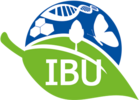Contact
Room: W4 0-049
Phone: +49 (0)441 798-3315
Email: jessica.tay.ying.ling@uol.de
Attachment mechanism of vascular epiphytes
Attachment of vascular epiphytes through ontogeny and across taxonomic groups
Attachment structures and strategies have evolved in diverse organisms to allow for reversible or permanent adhesion to different substrate types and under diverse environmental conditions. Some attachment structures include hooks, smooth pads, thin hairs, suction cups, byssus plaques, attachment pads and adventitious roots. Characterising reliable attachment mechanism of different organisms is of particular interest for the development of new technologies, materials and nature-inspired designs, especially in the field of biomimetic and
soft robotics.
Plants use attachment mainly for the purpose of propagule dispersal, i.e., hooks, adhesive mucus on seeds, but there are plant groups that use attachment to secure themselves to a substrate. One such group are vascular epiphytes that need to be permanently attached to their host plants throughout their lifetime. Epiphytes are, by definition, non-parasitic, but they are structurally dependent on their host. Being unable to develop a deep root system for anchorage like their terrestrial ground-rooted counterparts, epiphytes achieve attachment by growing in close contact to their substrate. A secure attachment to their host is vital epiphytes, because the chances of survival on the ground are low. Although structural dependence on a host is a prominent characteristic of an epiphyte, literature detailing the fundamental mechanism(s) of how these plants initially attach and remain attached to their hosts remains scarce. Firstly, propagules must obtain initial contact to the host and avoid subsequent removal. Secondly, secured propagules need to germinate and develop roots for attachment to the host and lastly, growing plants must maintain their attachment despite increasing size, as well as withstand numerous sources of mechanical disturbances by intense rainfall, wind, or arboreal animals
The aim this project is to investigate the role of attachment at different ontogenetic life stages of the epiphyte, i.e., from propagule dispersal and attachment, to seeding establishment, and last but not least, survival as a mature adult plant. The basic motivation of this research is to attain a comprehensive and mechanistic understanding of how epiphytes establish themselves in the canopy on different surfaces and varying environmental conditions. Here are the different objectives set out for the project:
- Description of the principal morphological designs (i.e., use of scanning electron microscopy) of various propagules of epiphytes and examine how they relate to the function of attachment (see Fig 1.);
- Investigate the mechanics of attachment of the propagule to the substrate (i.e, use of high-speed videography, measuring friction coefficient of propagules with a tilting platform) and how factors such as substrate roughness and substrate angle influence propagule retention rate;
- Examine how environmental factors such as wind speed and substrate wetness (i.e., use of wind tunnel and high-speed videography) can further influence propagule retention rate;
- Expand the investigation of attachment mechanism(s) and mechanical properties of seedlings with non-velamentous roots, i.e., Bromeliaceae, one of the largest groups with epiphytes, following the methods and materials in Tay et al., 2022.
Selected publications
Tay J, Zotz G, Einzmann HJR. 2023. Smoothing out the misconceptions of the role of bark roughness in vascular epiphyte attachment. New Phytologist 238: 983-994.
Tay J, Kovalev A, Zotz G, Einzmann HJR & Gorb SN. 2022. Holding on or falling off: the attachment mechanism of epiphytic Anthurium obtusum (Engl.) Grayum changes with substrate roughness. American Journal of Botany 109: 874-886. https://doi.org/10.1002/ajb2.16000
Tay J, Zotz G, Gorb SN & Einzmann HJR. 2021. Getting a grip on the adhesion mechanism of epiphytic orchids – evidence from histology and Cryo-SEM. Frontiers in Forests and Global Change – Forest Ecophysiology 4: 764357.
Tay JYL, Zotz G, Puczylowski J & Einzmann H. 2021. Go with the flow: The extent of drag reduction as epiphytic bromeliads reorient in wind. PLoS ONE 16: e0252790. https://doi.org/10.3389/ffgc.2021.764357




